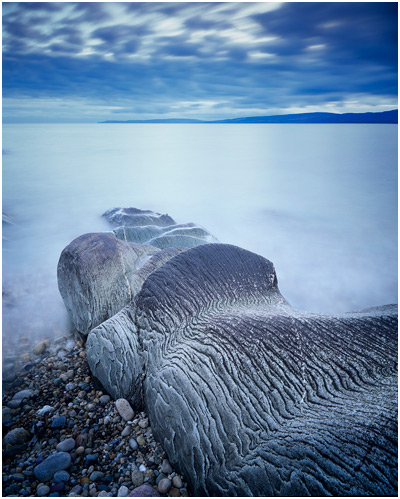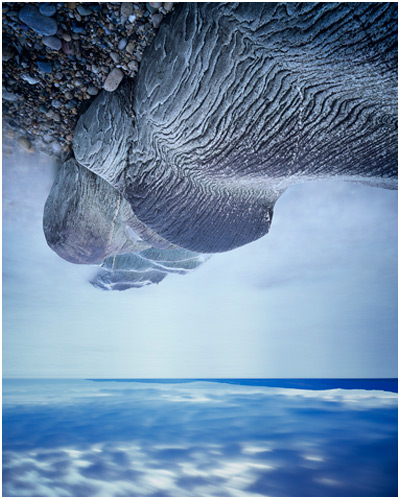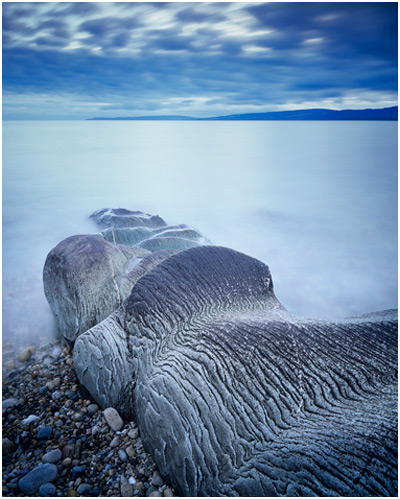A few days ago I discussed how rotating an image horizontally, allows us to re-interpret it and notice things about the balance between left and right. Well, here's an example of flipping the image vertically, that allows us to re-interpret parts of the scene that are maybe a distraction.
In the first image you see here, I'm going to flip it upside down, so we can see if anything starts to 'jar', or distract.
Here's the image turned upside down. Do you notice that there is some distraction from some rocks coming into the left hand side of the frame?
In the image below, I've cropped the left hand side to remove those slight dark shadows from the rocks:
And when the image is reverted back to its original orientation, here's what it looks like:
You'll have to compare the last and first images straight after each other. Essentially all I've done is remove some slight distraction in tones in the water on the left hand side of the frame. It's a subtle edit, but one which was helped along by flipping the image upside down.
I feel that when we flip images upside down, or sideways, we allow our brain to see them in a more abstract way. We're less conscious of the objects in the frame and instead, we interpret the scene as a collection of tones and shapes. Anything that is out of balance, or that is distracting, is noticed.
So go ahead and try it with some of your final edits. You'll notice things about the image you never say in the first place.




